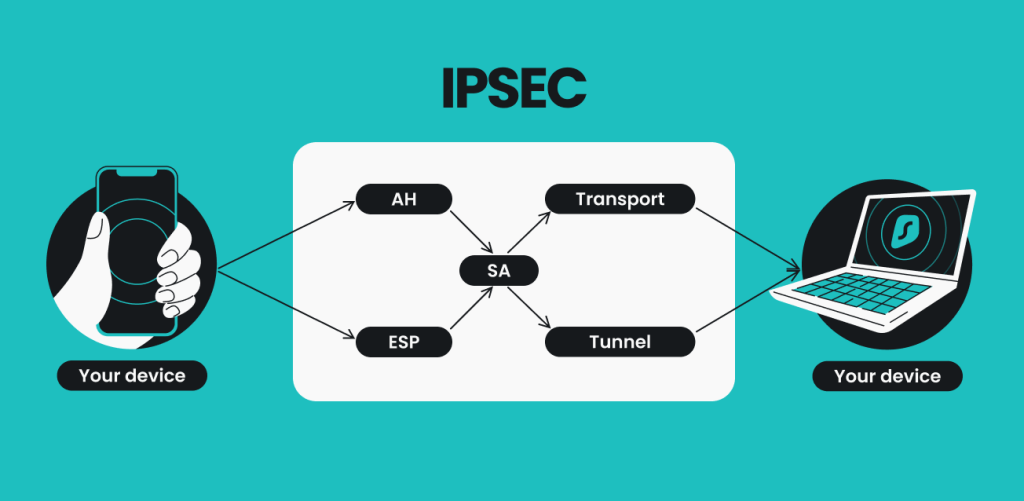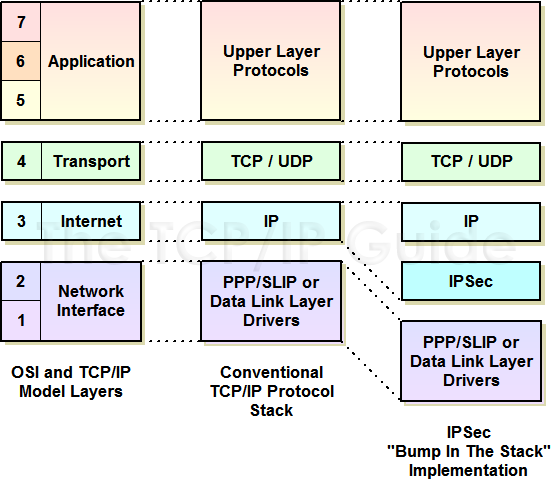Featured
Table of Contents
How Does A Vpn Work? Advantages Of Using A Vpn
IPsec validates and secures data packages sent over both IPv4- and IPv6-based networks. IPsec protocol headers are discovered in the IP header of a package and specify how the data in a package is handled, including its routing and shipment throughout a network. IPsec includes a number of elements to the IP header, consisting of security information and several cryptographic algorithms.

ISAKMP is defined as part of the IKE protocol and RFC 7296. It is a structure for crucial facility, authentication and negotiation of an SA for a safe and secure exchange of packets at the IP layer. In other words, ISAKMP defines the security criteria for how 2 systems, or hosts, communicate with each other.
They are as follows: The IPsec procedure begins when a host system recognizes that a packet requires protection and must be sent utilizing IPsec policies. Such packets are thought about "interesting traffic" for IPsec purposes, and they activate the security policies. For outbound packets, this indicates the appropriate file encryption and authentication are applied.
Internet Protocol Security (Ipsec)
In the 2nd step, the hosts utilize IPsec to negotiate the set of policies they will utilize for a secured circuit. They likewise confirm themselves to each other and established a safe channel between them that is used to work out the method the IPsec circuit will secure or verify data sent out throughout it.

A VPN essentially is a private network carried out over a public network. VPNs are commonly used in organizations to enable workers to access their corporate network remotely.
Generally utilized in between safe network entrances, IPsec tunnel mode enables hosts behind one of the gateways to communicate firmly with hosts behind the other gateway. For instance, any users of systems in an enterprise branch workplace can securely link with any systems in the primary office if the branch office and primary workplace have protected gateways to serve as IPsec proxies for hosts within the particular workplaces.
Ipsec Explained: What It Is And How It Works
IPsec transportation mode is used in cases where one host needs to connect with another host. The two hosts negotiate the IPsec circuit directly with each other, and the circuit is typically torn down after the session is total.
With an IPsec VPN, IP packets are secured as they travel to and from the IPsec entrance at the edge of a private network and remote hosts and networks. An SSL VPN protects traffic as it moves in between remote users and an SSL entrance. IPsec VPNs support all IP-based applications, while SSL VPNs only support browser-based applications, though they can support other applications with customized development.
See what is finest for your company and where one type works best over the other.
Ipsec Vpns: What They Are And How To Set Them Up
Each IPsec endpoint confirms the identity of the other endpoint it desires to communicate with, guaranteeing that network traffic and information are just sent to the designated and allowed endpoint. Regardless of its fantastic energy, IPsec has a couple of issues worth mentioning. Direct end-to-end interaction (i. e., transmission technique) is not constantly available.
The adoption of different local security policies in massive dispersed systems or inter-domain settings may pose serious problems for end-to-end interaction. In this example, assume that FW1 needs to examine traffic material to discover intrusions and that a policy is set at FW1 to reject all encrypted traffic so regarding implement its content examination requirements.
Users who utilize VPNs to from another location access a personal organization network are put on the network itself, providing them the same rights and functional capabilities as a user who is linking from within that network. An IPsec-based VPN might be produced in a range of methods, depending upon the needs of the user.
Ipsec Vpn Overview
Since these elements might stem from different suppliers, interoperability is a must. IPsec VPNs make it possible for smooth access to enterprise network resources, and users do not necessarily require to utilize web gain access to (gain access to can be non-web); it is for that reason a service for applications that require to automate interaction in both methods.
Its structure can support today's cryptographic algorithms as well as more effective algorithms as they appear in the future. IPsec is a mandatory component of Internet Procedure Variation 6 (IPv6), which companies are actively deploying within their networks, and is strongly suggested for Web Procedure Variation 4 (IPv4) implementations.
It offers a transparent end-to-end secure channel for upper-layer protocols, and executions do not require modifications to those procedures or to applications. While having some drawbacks associated with its intricacy, it is a mature procedure suite that supports a series of encryption and hashing algorithms and is highly scalable and interoperable.
Vpns And Vpn Technologies - How Ipsec Works
Like VPNs, there are many methods a Zero Trust design can be carried out, however services like Twingate make the process considerably simpler than having to wrangle an IPsec VPN. Contact Twingate today to discover more.

IPsec isn't the most common web security procedure you'll use today, but it still has a vital role to play in securing web communications. If you're using IPsec today, it's probably in the context of a virtual private network, or VPN. As its name suggests, a VPN creates a network connection between 2 makers over the general public web that's as secure (or nearly as secure) as a connection within a private internal network: most likely a VPN's a lot of popular use case is to allow remote staff members to gain access to secured files behind a corporate firewall as if they were working in the office.
For many of this post, when we say VPN, we mean an IPsec VPN, and over the next several areas, we'll discuss how they work. A note on: If you're seeking to set up your firewall to allow an IPsec VPN connection, make sure to open UDP port 500 and IP ports 50 and 51.
How Does A Vpn Work? Advantages Of Using A Vpn

Once this has all been set, the transportation layer hands off the data to the network layer, which is mainly managed by code working on the routers and other elements that comprise a network. These routers select the route individual network packages take to their destination, but the transportation layer code at either end of the communication chain doesn't need to know those information.
By itself, IP does not have any built-in security, which, as we noted, is why IPsec was developed. But IPsec was followed carefully by SSL/TLS TLS represents transport layer security, and it includes securing interaction at that layer. Today, TLS is built into essentially all browsers and other internet-connected applications, and is more than sufficient protection for everyday internet usage.
That's why an IPsec VPN can include another layer of security: it includes securing the packets themselves. An IPsec VPN connection begins with facility of a Security Association (SA) in between 2 interacting computers, or hosts. In basic, this includes the exchange of cryptographic keys that will enable the parties to secure and decrypt their interaction.
Latest Posts
How To Choose The Best Vpn For Your Start-up
Best Virtual Private Networks Reviews 2023
Best Vpns Of August 2023